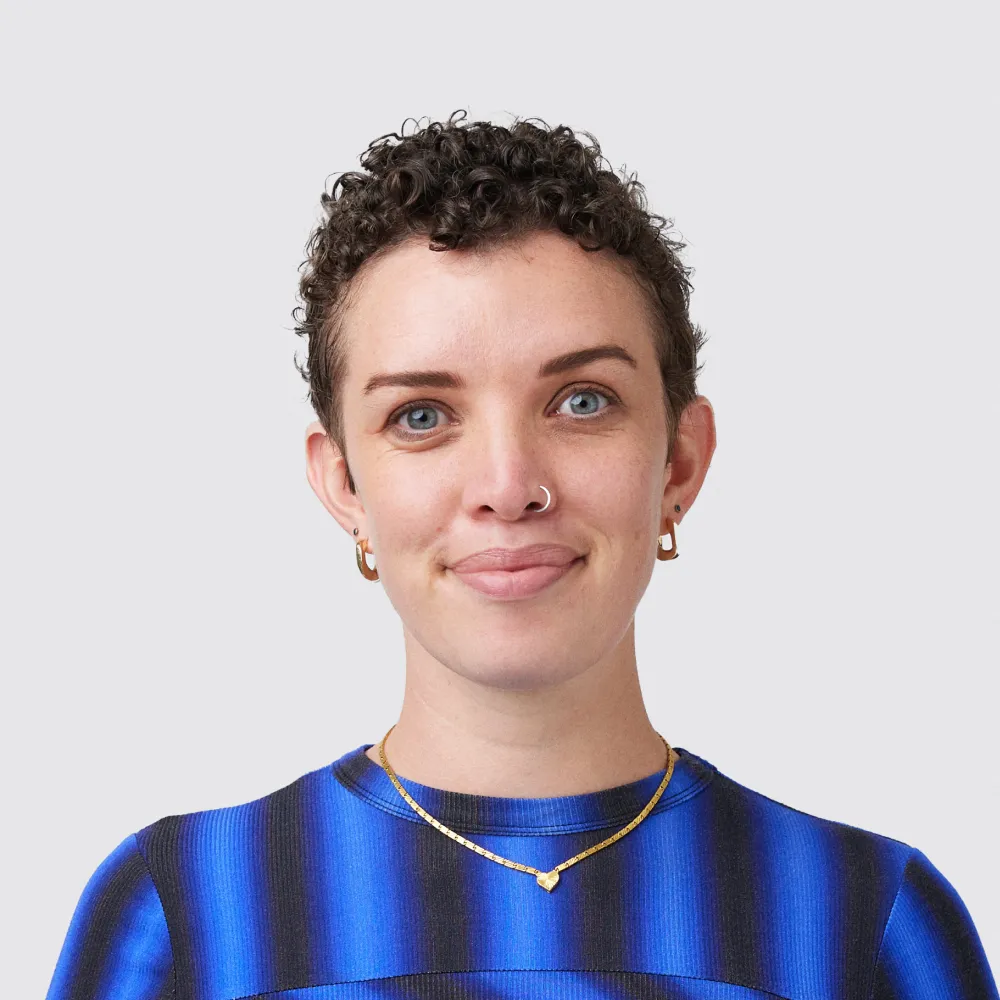What does it take to bring a human-centred design process to a remote community?
Philippa Abbott, our Head of Design, sat down with Jamie Hodgson, National Executive Director for Innovation and Strategy at Key Assets to discuss methodologies that are constantly evolving out of necessity.
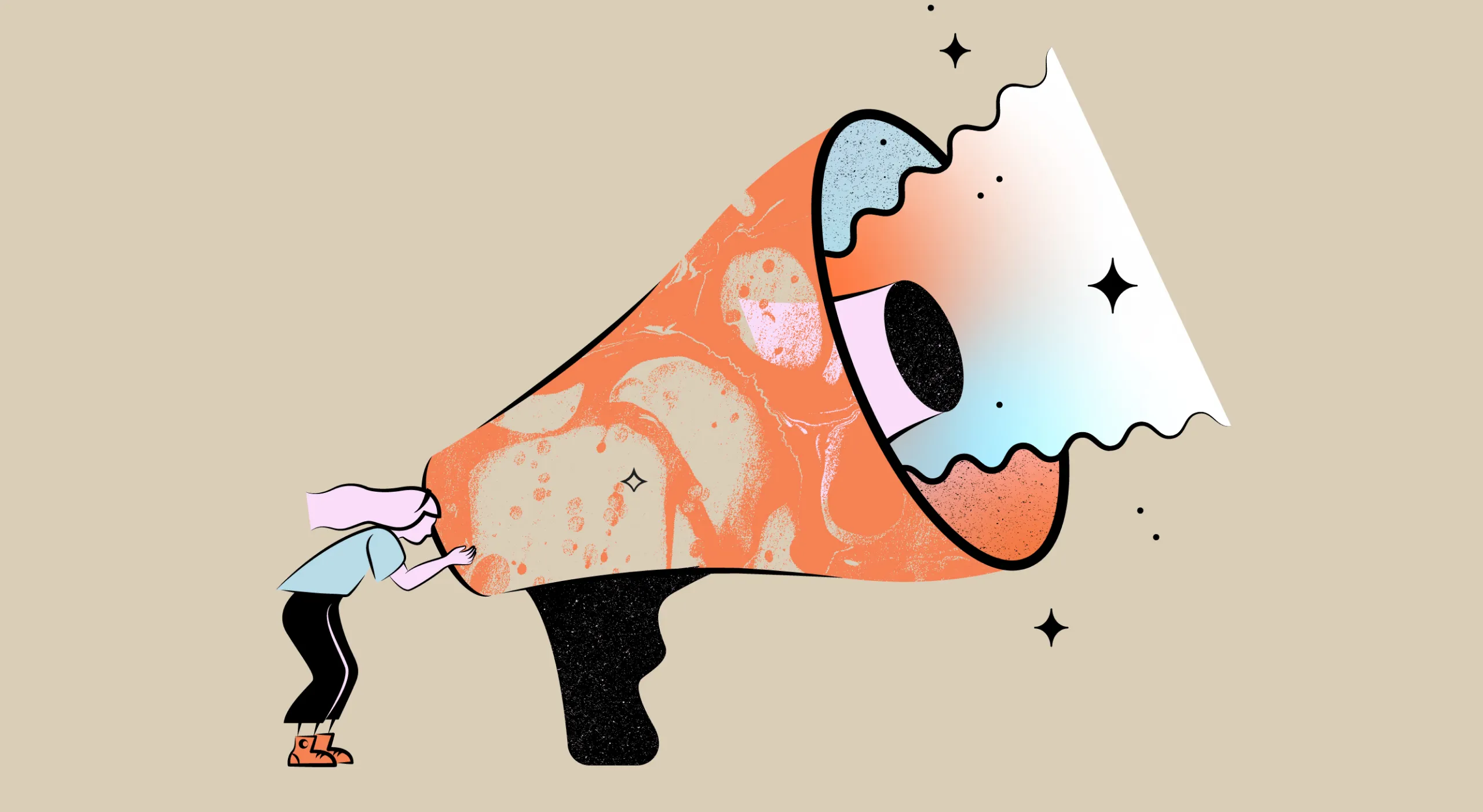
In conversation
Jamie Hodgson, National Executive Director for Innovation and Strategy at Key Assets
Philippa Abbott, Head of Design at Today

The history of Key Assets
Jamie, can you tell us about Key Assets and your role there?
I’ve been working with Key Assets for eight years now and my current role is National Executive Director for Innovation and Strategy. Before that, I was Director for New South Wales, and Norfolk Island. In a nutshell, those particular roles took strategic and operational responsibility for the service provision in those jurisdictions.
Key Assets was started 25 years ago in the UK by two people named Jim and Jan. Jim was a social worker and Jan was a foster carer. They both shared a vision and started Key Assets to improve outcomes for children and young people across the world. If we fast forward to now, we’re a global, not for profit, children’s services agency - with a mission to make a positive and lasting difference for children, families and communities. We’ve been making an impact in Australia since 2007.
What was the first push to move to Australia?
The passion that Jim and Jan had in the UK, led them to conversations with like-minded people around the world, and allowed them to make a positive difference that would impact so many lives. They connected with people from Australia while at a conference in New Zealand, and it started from there. Which is generally how our company has started in each jurisdiction—Jim and Jan would meet people, hear their stories, recognise a need and set up services that way.
It’s been an organic process of finding passionate people that believe in supporting and protecting children and young people; and really looking at how we can better support them through family-based care all over the world. They really believed that the model could work globally, and I think 25 years later, they've demonstrated that really clearly. It’s been a nice journey.
What do you think gave them confidence that the model could work globally?
We have a concept where the carer, or the parent is the agent of change. It’s a wrap-around model that really puts the people that live and breathe supporting a child or young people at the centre with the child. That model was proven and very successful in the UK, so they applied that same model globally. It’s built on relationships—respect, honesty, and transparency in what we do.
The other component is that we’re an organisation that prides ourselves on supporting our staff. Recruiting people that have the same values and the same passion for the work that Jim and Jan started. I think that synergy makes for a really good service model.
What’s the benefit of that sort of service model for children and families?
At Key Assets, the concept is that the agent of change is the carer or the birth parent. This really breaks down the idea that professionals are the experts in children’s lives. It places the decision making power with the carer or parent and respects that those people are taking on the majority of responsibility.
It also prioritises participation anchored in the voice of the child. It kind of flips things on its head in a way—as social workers we're told that we’re the experts—but this model puts responsibility back into the team around the child. The Key Assets model is called the Key Care Team.
The child, the carer, and the parents are the experts in their own lives—rather than the system or professionals—it’s a really nice way of thinking about it.
I feel a really strong alignment to this because it’s very fundamental to human-centred design to say, “you as a user are also an expert through your lived experience.” It's highly empowering, and it also means that decisions or solutions are context-appropriate. Decisions are made in the home, in the community that the person’s life is going to play out in. They’re not made from an office in another city, according to a social work guideline or framework that doesn’t fundamentally value their context or problem.
Exactly right, there’s a really nice alignment and I think that’s why Key Assets has been so successful in the model of supporting children and young people. But there are different stakeholders and acknowledging those stakeholders is really important. Everyone has a really difficult job and we acknowledge that government, community, children, individual parents, carer, the family unit, they all have a really difficult job. There’s no one organisation or one person that can make change, and it requires a high level of collaboration. I think that’s what we prioritise when we want to work on different projects. We want to really break down who’s got what skill set or knowledge that they're able to bring to the table to benefit vulnerable children and young people.
What’s an example of how the social worker is involved in this model, compared to the more traditional framework where they’d be making decisions for the child and then you’d have a carer making sure decisions implemented?
I think a practical way of thinking about this is that the child or the carer is part of the team. So they would be at the table—literally at the table—and they would be consulted. We have a saying here that we're all equal, but we play different parts. What we have, and the way it would look is that the decision making or the decision may come literally from the child, or from the carer, or the birth parent.
So the intent of the idea can be validated, no matter if it comes from the child or carer, because they can say, “Well, this is how it’s actually playing out in our house, in our suburb.” And the social worker's role would be to respond with, “How can we better the situation? Or, “How can we meet that need?”. Rather than the social worker deciding on the need and then the carer and child having to adjust to meet that decision.
I think another really good example is where the social worker really wanted to prioritise what support they need to achieve the goal. We’ve recently invested quite heavily in a practice framework to focus on issues that the carer has identified they want to work on. It focuses decision-making around what’s happening for the child and the carer in the moment. That can be completely different from what the social worker wants to work on, or what the department wants to work on. It breaks that down really quickly and it’s a project-based approach that goes through phases—it’s a really structured way of doing it—but it literally places the decision-making and control with the carer of the child.
The child, the carer, and the parents are the experts in their own lives—rather than the system or professionals—it’s a really nice way of thinking about it.
Jamie Hodgson
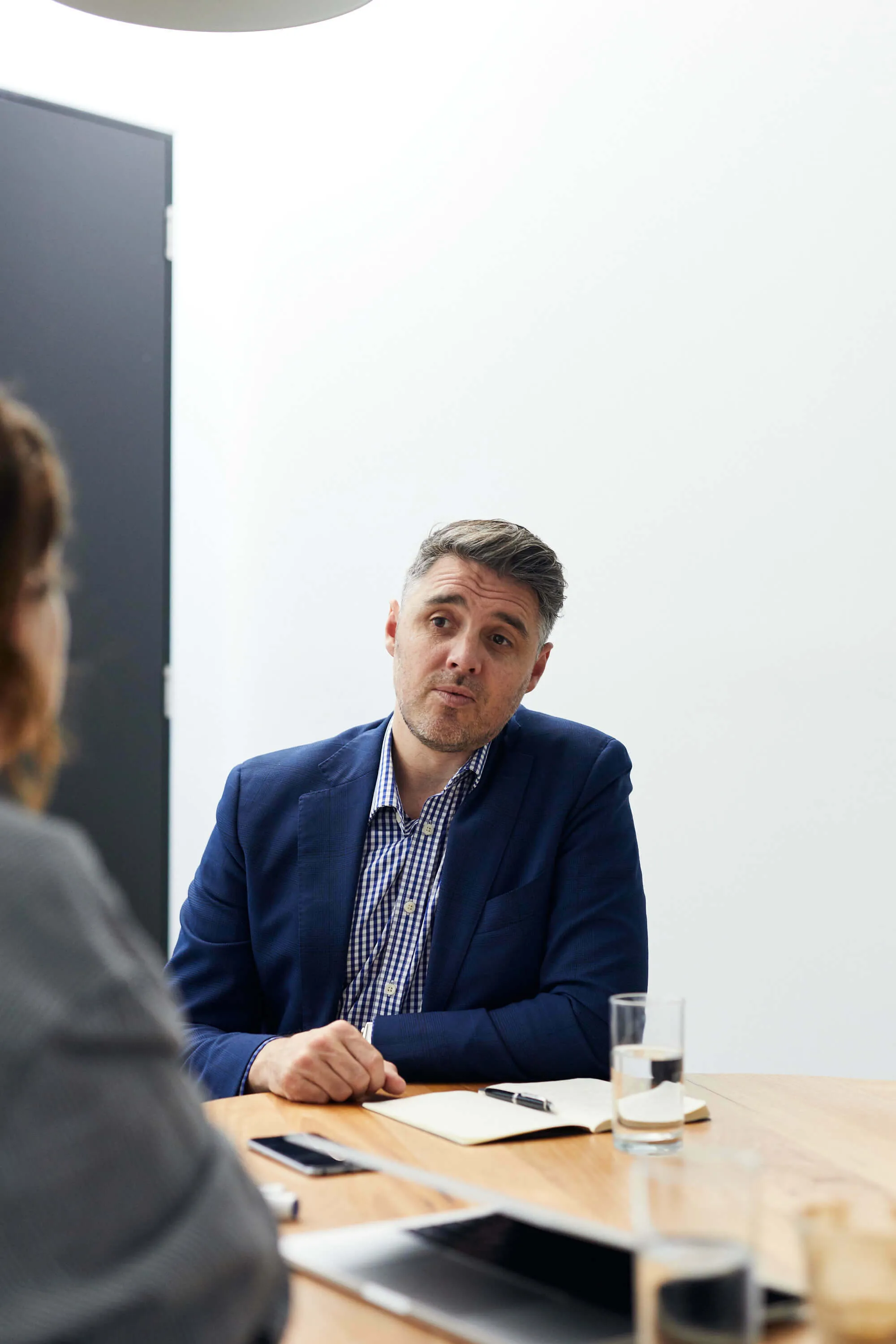
Our partnership
What I’ve noticed working with you over the last year and a bit now, is a huge amount of strict frameworks and guidelines to ensure the protection of children is consistently upheld. I’ve been really impressed with the enabling approach, so that the decision-making can happen in the home or in the specific context; whilst also being able to meet, navigate and negotiate some quite complex frameworks, guidelines, and triage processes.
I suppose that’s the reality of working on wicked problems, isn’t it? It’s complex system thinking.
While I’ve been working with you and Today I’ve been completely impressed by how you can adjust and pivot really quickly to the client’s needs and the community needs in a way that is very collaborative, rather than saying, "We're the experts.” Really, the relationship from my perspective, between Today and Key Assets, mirrors that of how we work. It doesn’t matter if it’s with certain consultants or government or carers or young people, the principles are the same. It’s focussed on having respectful conversations for a common goal.
Working with yourself and a few other people in senior management at Key Assets, I can clearly see the alignment between what we are trying to achieve. Whenever we’ve talked about a human-centred design approach, it clicks and inspires quite quickly. Which shows that it is part of your organisational culture and way of working.
I’ve always thought, “Where does it come from?” I think it does come from the people that we employ, but also how we started. Jim, being the founder and still part of the organisation, and then who he has employed to take on that way of working.
But in saying that, we’re like any other organisation, we have to be really mindful about how we can continually innovate and be creative. Because the world changes around us, and we want to be able to respond with the best evidence and the best approach. We’re at risk of not doing that if we don't have the voice of the child, the voice of the carer or our staff involved. We’ve constantly got to keep on bringing that back to the table. That’s a challenge. That’s hard.
Human-centred design has become very much about, “What is the core need in terms of a service experience?” But fundamentally as well, it’s about really understanding how those needs are changing over time. A perfect example would be understanding what the difference is between a child going into care at a young age, when it actually used to happen at a much older age. And understanding how that plays out in terms of psychological impacts, stability, and all those things.
Yes, I think we’ve constantly got to — especially as a design specialist — always be thinking about, “How do we know what we know? Are we at risk of sitting around a table with senior execs and speculating? What are the unintended consequences of that speculation?”
So at Key Assets, you’ve created a framework to ensure that accountability always happens. And if we use design methodology to explain it, it’s fundamentally about participation and problem solving and using design tools to do that problem-solving. Whether it’s your end-user children, whether it’s the small and medium enterprises you’re working with, psychologists, or your staff who are on the ground.
I’ve seen it play out when we’ve had meetings with your team, we always walk away so impressed with how invested and how much knowledge there is in the room.
It’s because those people believe in what they do.
We ask ourselves in the organisation, “What gets you up in the morning?” It’s a really important question because it allows people to actually say what their values are and articulate how they align to Key Assets. It’s really nice to hear that you’ve had such a positive experience with our team.
I think it’s a really good example for anyone in a purpose-based industry. When you’re in the purpose or meaning-making industry, the job’s hard, you know? You see a lot of stuff that’s not exactly the best part of human nature, so you have to have resilience and know that you’re creating positive change. When you're doing it within an organisation that supports you, that’s pretty amazing.
... we have to be really mindful about how we can continually innovate and be creative. Because the world changes around us, and we want to be able to respond with the best evidence and the best approach.
Jamie Hodgson
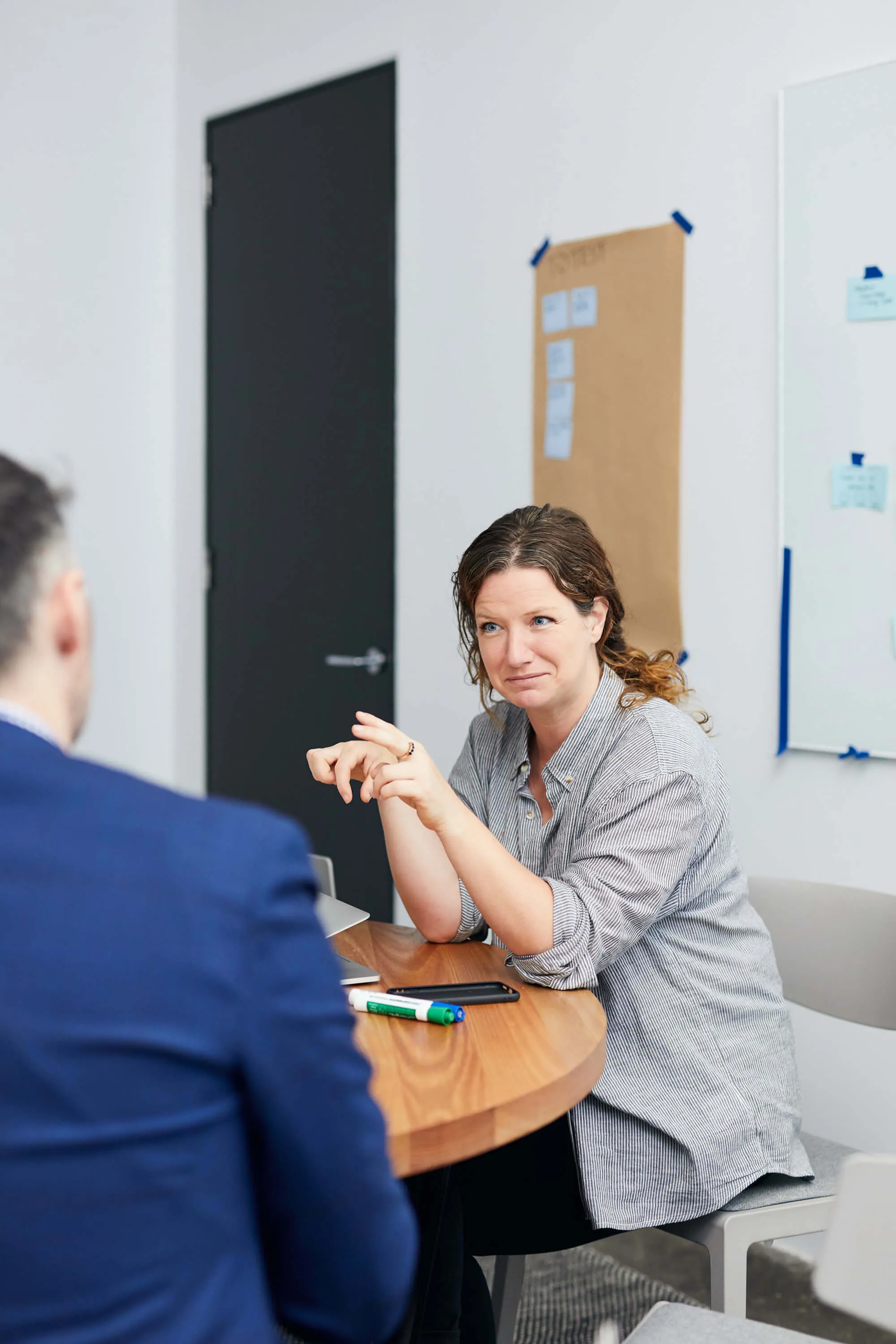
Human-centred design in remote communities
If we look at program design or service systems, it’s really hard to argue with the end-user. As soon you bring them and their voice to the table it changes the dynamic and the thinking. I think that’s been the really nice aspect of working on the project that we did with you in a remote territory. We couldn’t engage the community directly, but together we created a way of using community trust points to get the voice of the community through to the project.
The project that you’re talking about is an example of where we customised the methodology to your needs as a client, and to the community and context we’re working in. Because we customise our methodology—and we aren’t trying to apply a cookie cutter approach—that’s how we can be successful. We applied the core fundamentals of participatory design and human-centred practice, but it was very much a custom design approach for you and for that project.
Absolutely. And for that remote community, in particular, we were hearing that they didn’t want more consultation. So it required being flexible and thinking creatively about how to get the voice of the community involved in what we were trying to achieve.
Yes, the community was over-engaged by that point. And this is quite common within remote communities; people go and ask them what the problem is, and then nothing happens afterwards. So it requires you to be really, really careful about how you evaluate what your community needs are before you even get there, and respond to those accordingly.
And the problem we discovered is that the coordination of community services was challenging; we didn’t have an overview of the service system or the amount of resources that were going into the community.
I think what’s fundamentally interesting in hindsight, is that the way we approached the service system actually is quite an innovation itself.
In common service design practice, you’re mapping an end-to-end process, with an assumption of a linear service.
However, when you think about it, no service actually works linearly. If you’re thinking about getting on a tram, you’re also thinking about crossing a road to get on and off that tram. You’ve just hit two government departments and three service providers. You are also hitting a button to cross a road that is a product and a service. There are all of these things that are actually very much interrelated, and I think engaging with this complexity is a great thing in service innovation. We tend to see services as these linear experiences so that we can comprehend them as you see quite often in customer journey artefacts.
On this project we were gung-ho saying, “Let’s engage the complexity of the system. Let’s map the whole thing out and go wide.” I then remember the point where we realised, “Oh, we can't go any further.” And it was then that we actually understood the complexity and were able to embrace it.
What I loved about it as well was the digital aspect around the interdependencies; looking at the user segments and then seeing the interdependencies gave a really strong visual to the journey — in itself it is really powerful. Beyond this as an individual and somebody who is part of an organisation and also part of complex environments, it enabled me to see services as being non-linear, and activities rarely completed in isolation.
That sentiment reaches wider in recognising that we as multiple service providers that do not sit in isolation, and that the work we do individually impacts on a community and multiple other service providers.
I think the second part was about understanding. While evaluating the service system we were looking at strengths, we were exploring things that weren’t working so well, we were identifying gaps, opportunities, and unpacking cultural discourses that mediated and effected these factors.
So, whether it was a community being so close-knit that everyone knew what was happening, or others feeling isolated and feeling a lack of cultural identity, we took that layer off and let it rise up, and then evaluated the service system from there.
People had change fatigue as well. We had to be really mindful of the amount of change that was occurring within the community, but also for change that would be imposed on the community as well. That was a really big factor when thinking about the service system as a whole.
You acknowledged that the services could only work as well as they could collaborate, and so being able to engage broadly and see it from everyone's perspective was fundamentally helpful in itself.
When we were doing a lot of the fieldwork, I remember we had a point where people from the community were saying, “This is a great approach. We're so glad that you're asking these questions.” So within that climate of change fatigue, everyone was incredibly open and engaged with the process.
Yeah, and they actually said that it felt different; that feedback came from everyone we engaged with. They said that the way that we engaged with them was completely different to how other people engaged with them.
What do you think the factors were that made that engagement different or so unique?
I think it goes back to what we previously talked about; respect, honesty, and transparency. I think some big factors were not promising things we couldn’t deliver, genuinely engaging with the community about their role, and giving them a voice. I think the approach was absolutely spot on for the work that we wanted to do.
We were strategic in our process to deal with very complex problems—which was not only the services, the remoteness, and the community itself—however also looking at how you could evaluate what the services were actually providing, and understanding this to create a visual to oversee the whole service system.
Central to this was our fieldwork approach—we spent a week interviewing, engaging and mapping the community with a very flexible and adaptive method.
It was good to have an understanding that there was flexibility within the approach. I also think that the ability to debrief after and plan and prepare it was really good. It was structured, but not prescriptive. And it allowed us to pivot, and actually, once we got insights, we moved on. And that demonstrated respect in what we were doing with people, so we didn't have to go through a full linear approach with them if we didn’t need to. I think that was really useful.
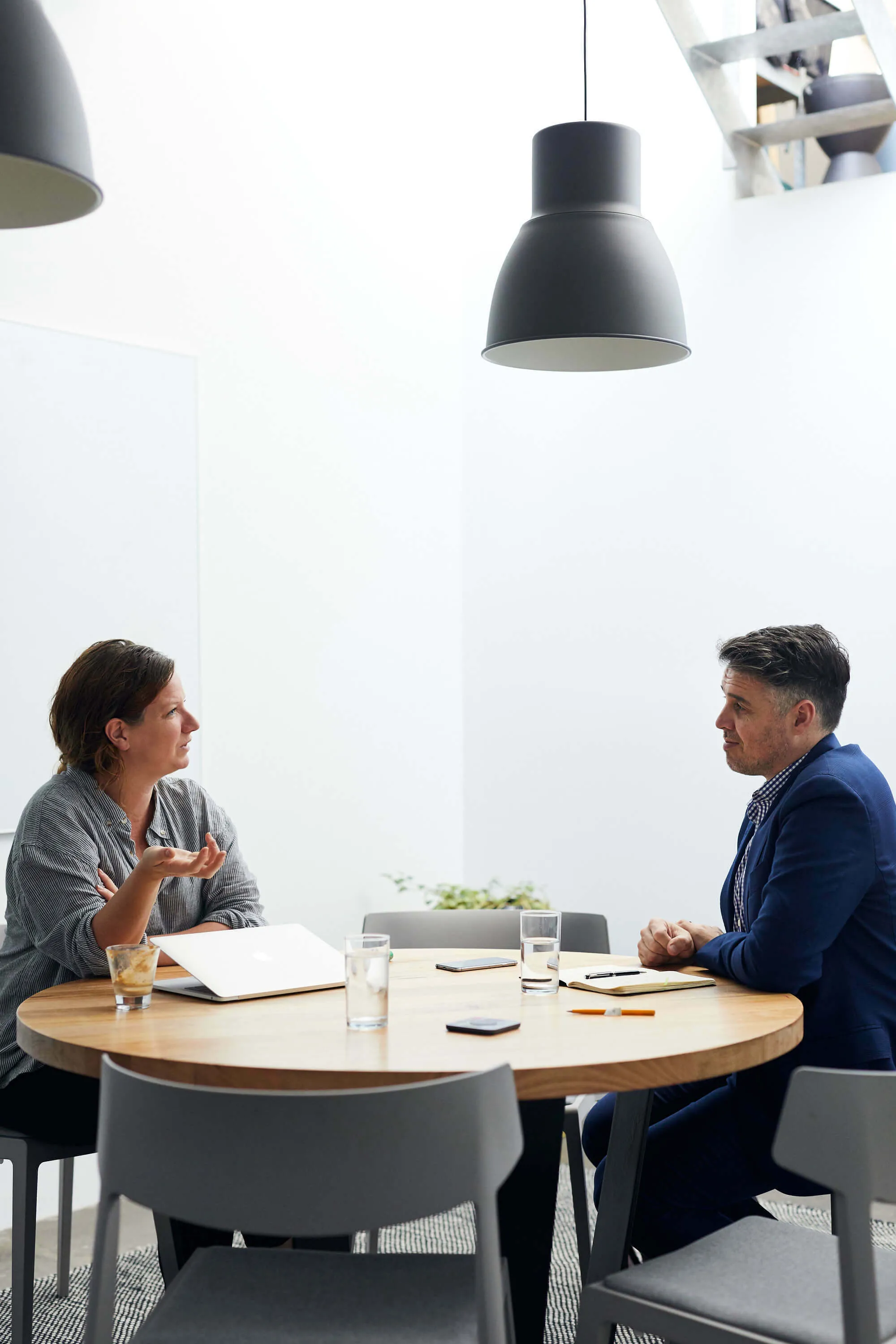
Fieldwork is crucial
In human-centred design and service design, you do a lot of discovery research. At Today we have developed our fieldwork approach to really get immersed and embedded within a community as quickly as possible. So you’re not just going and asking people questions, but gaining an understanding of what the local economy is like, spatial assessment, cultural mapping and even what daily interactions, like getting a coffee, feel like.
This ensures you shift your perspective so that you can be accountable to the context of the design and building a solution that will work in that unique place.
That’s so important for the project. And for us to not have that opportunity to go and do that fieldwork would have been really, really hard.
I don’t think the project would have been as successful if there wasn't that week of fieldwork. Fieldwork shouldn't be underestimated; in user research it could be quite easy just to speak to particular people in the community. But what we did was to speak with all people—people that represented a cross-section of the community—that worked for government, that didn't work for government, and so on.
It was the people at the coffee shop, all the way through up to quite high-level people operating within the remote communities. I think that’s a really important factor when you think about fieldwork—and something that I value—regardless of who you speak to, the insights started to come through by the end of it. That was the exciting part.
Exactly. It’s so exciting, isn’t it? You do get a natural momentum, because you’re pivoting and adapting as you go. We may have found a complexity that meant it was harder to get to the details and would have restricted our level of insights. But we moved with the process of the project and we had debriefs in the car in between interviews.
We were continually engaging with the context, evaluating it, and then testing out our understanding. That flow worked really well.
Distilling insight
The challenge is then, how do you engage the rest of the people around you? We’re so immersed, we’re hearing it first-hand, we’re getting the insights, and then I think the next challenge was, how do we take that and tell the story? What’s the narrative for this community? How does it link back to Key Assets and how do we make it live for other people, and represent the community effectively with the aim of building relationships with stakeholders that are making decisions around this community? I think we did that well under the circumstances. It was really complex.
It was a huge opportunity in an incredibly complex context. After the fieldwork, we came back and started the design thinking and synthesis process. I don’t think you ever got to see the crazy brain room, but it was quite large and filled with butcher’s paper everywhere, covered with my mad scrawling.
Then came the process of refining it back down to a point where we had a really clear view of what the service map looks like.
What did you think when we presented the artefact to you?
I think the intense part of the project for me was when we were doing the fieldwork, and I came out of that and had a bit of a break. So walking into a room with the visual artefact was very powerful. It’s very impressive how the mapping occurred, but also, I quickly was able to identify the work that we had done and discussions we had.
I was quickly making connections between the fieldwork, the research, and every workshop we’d had in between. To actually see it in a final form and presented back to me was really, really powerful.
Bringing in particular quotes of the people that we interviewed was key, as that’s the connection between the work that’s been done and who you're presenting to. It helps to highlight the community value propositions for services.
Definitely, because we were mapping a large number of services initially and it grew to a much higher number. How we chose to structure that was working out the community value proposition for each part of the journey, identified and aligned services to it, and then identified how those services were or were not meeting that need. It made it really easy for people to engage with and ensured that community needs were effectively embedded in the middle of decision making.
It wasn’t only about the end-users and identifying what the community needs were, or the service provider needs were, it was also understanding how you structure and communicate the findings in a way that would help other participants to do their job to continually ensure end-user benefit and therefore build effective services.
I think the other thing is that we shouldn’t underestimate that the service mapping project has led on to other work and other conversations.
One of the insights from the people we were interviewing was that they themselves didn’t know how to access services when they had an issue. It could be around mental health, it could be around aged care, it could be around anything. One of the practical pieces of feedback was given to us was, “We would love to understand what services are in our community.” From these insights, we have now developed a service directory that is led by a community forum. It’s owned by the community and we are the facilitators of the project.
It’s a really nice side project that’s come out of that work, it wasn’t directly for us as the client, or for other key stakeholders, but it was something that community got value from as a result of our project.
I think it’s worth highlighting here that the value of a piece of work can also be when you can step away and it enables others to do their job without you being there. As a consultant, I’m always trying to work towards that result. In international development particularly, or in social innovation, you’re always conscious of the fact that you don’t want to create a dependency on you as an outsider unless you're willing to stick around and you’re actually going to stick around.
We spoke about that a lot at the start of the project. How do we make it sustainable for when we step away? I think that was done successfully.
Have there been other ripple effects from the project?
What’s come out of this project is the fact that as an organisation, we’ve seen such value in it and now we’re able to take that work and use it as a basis for work in another remote community with a completely different context. What we’ve seen is that it allows different conversations to occur. Not only with us, internally at Key Assets, but also with other stakeholders we're working with.
I think there's so much value for not only senior decision-makers, but also more junior people, to better understand the context, acknowledge that we're working with complexity, but also explore how we value add. I think it has helped us to answer our most important question, “How do we bring the voice of the child and the community to the table?”
Thanks, Jamie. It was amazing talking through all of these big projects and having a chance to reflect with you.
Bringing in particular quotes of the people that we interviewed was key, as that’s the connection between the work that's been done and who you're presenting to. It helps to highlight the community value propositions for services.
Jamie Hodgson
